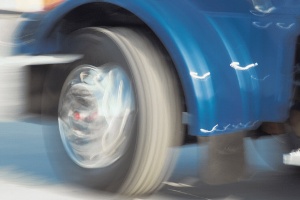 While big rigs would seem to be more dangerous to passenger cars in roadway accidents, single-unit trucks actually cause a disproportionate number of passenger vehicle fatalities, according to a new report from the National Transportation Safety Board (NTSB).
While big rigs would seem to be more dangerous to passenger cars in roadway accidents, single-unit trucks actually cause a disproportionate number of passenger vehicle fatalities, according to a new report from the National Transportation Safety Board (NTSB).
Despite the impact on society of crashes involving these trucks, they are excluded from many safety rules – something the NTSB wants to change.
Single-unit trucks are large trucks that have a gross vehicle weight rating over 10,000 pounds with non-detachable cargo units and have all axles attached to a single frame. They are different from tractor-trailers, which are able to drop off and pick up semi-trailers.
"We must do better"
“Crashes involving single-unit trucks resulted in about 1,800 deaths each year during 2005-2009 and also caused thousands of injuries,” said NTSB Chairman Deborah A. P. Hersman. “These trucks are ubiquitous in our communities, yet they are exempted from many safety rules. We must do better for our citizens.”
The NTSB study looked into the injury severity and crash characteristics of single-unit trucks over a five-year period during 2005-2009.
The study was conducted because of concerns about the risks posed by single-unit trucks and their exclusion from some safety rules applicable to tractor-trailers.
Countermeasures could help
Among the findings:
• Single-unit truck crashes have a considerable impact on society, as measured by fatalities, injuries, hospitalizations, and emergency department visits.
• Single-unit trucks should be subject to certain vehicle safety rules applicable to tractor-trailers, including requirements for rear underride guards and treatments to enhance conspicuity.
• Additional vehicle-based countermeasures are needed to protect occupants of passenger vehicles, pedestrians and cyclists involved in single-unit truck crashes, including side underride protection systems and technology to compensate for single-unit truck blind spots.
• Adverse effects of single-unit truck crashes have been underestimated in the past because these trucks are frequently misclassified and therefore undercounted in federal and state databases.
• Multiple data sources are needed to get an accurate picture of large truck safety, including two sources (Trucks in Fatal Accidents and state Crash Outcome Data Evaluation Systems) that are scheduled to be discontinued.
Recommendations from NTSB
As a result of the findings of this study, the NTSB issued safety recommendations to the National Highway Traffic Safety Administration, the Federal Motor Carrier Safety Administration, the Federal Highway Administration, and the US Department of Transportation. The safety recommendations address modifications to enhance the ability of single-unit truck drivers to detect pedestrians and cyclists, to prevent passenger vehicles from underriding the rear and sides of large trucks, and to improve visibility of single-unit trucks on dark and unlit roads.
The NTSB is also recommending improving federal and state data on large truck crashes, continuing functions now performed by Trucks in Fatal Accidents and the state Crash Outcome Data Evaluation Systems, examining the magnitude and consequences of single-unit truck drivers operating with an invalid license, and evaluating potential benefits for expanding the requirement for commercial driver’s licenses to lower truck weight classes.
Learn more
A synopsis of the NTSB safety study, including the findings and a complete list of the safety recommendations is available. The full report will be available on the website in a few weeks. To view the synopsis of the NTSB report, including the probable cause, findings and a complete list of the safety recommendations, click on the following link: http://www.ntsb.gov/news/events/2013/single_unit/2013_Abstract_Single_unit_trucks_6-5-2013.pdf.



